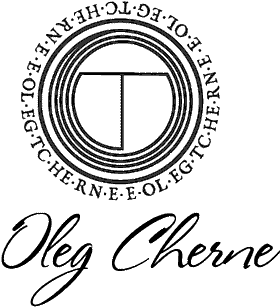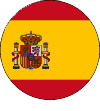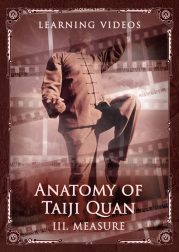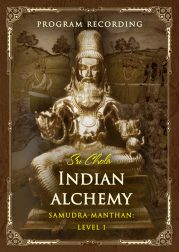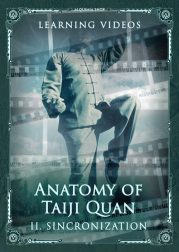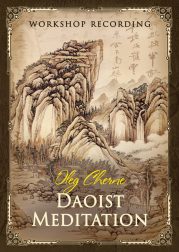Andean alchemy
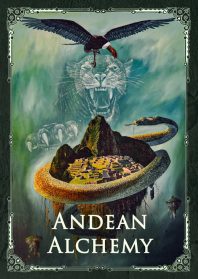
New Guardians will come to our Earth,
And those who have done great harm to Mother Earth,
Will have to change their attitude towards her or leave her.
To change your attitude, first you need to change yourself.
The Andean civilization is a matrix civilization, it is not among the world civilizations that have been created by other civilizations. It was formed during the period of the Sumerian civilization (3rd millennium BC), which is proof for the special status of the Andean civilization and its connection with the celestial plane and the special conditions formed in the Andean region.
What is unique about this civilization is its preservation of knowledge. Despite the Spanish invasion, the Andean tradition has survived to this day thanks to the Q’ero Indians (also spelled Kero, Kiro), who live in the Andean highlands. Their ranks include the direct descendants of the Inca priests, who lived in hiding from the Spaniards for centuries. They preserved the sacred knowledge of Pachacutiq or Uku-Pachacutiq – a knowledge that can be called the Andean alchemy.
This tradition reached its apogee during the reign of the ninth Inca (the ninth level of perfection) Sapa-Inca Pachakutiq Inka Yupanki, who ruled in 1418-1471. It was at this time that the egregor of the Incas reached its peak in the form of their great empire Tawantinsuyu (Tawantin Suyu means “the Land of the Four Countries of the World” in Quechua). The name of the ninth Inca, Pachacutiq, means “Changing Space and Time,” and Yupanki means “Possessing Knowledge.”
The Inca culture itself can be considered a product of the Andean alchemy, as the Inca is conceptually similar to the Perfect person. Each Inca is the product of a 13-level improvement process (this is how long the Inca Empire itself should have existed). The pinnacle of this knowledge was the special place of transformation of Machu Picchu (meaning “Old Mountain“ in Quechua) – the residence city and the spiritual centre of the empire of Pachacutiq Yupanki, where the alchemical task expressed by the term “pachacutiq” was realized, that is, being on Earth (pacha) and the ability to change time (kuti, kutek).
Being an Inca is, therefore, associated with a certain quality, a manifestation of the ability to achieve complete transformation. The Incas became the collectors of the knowledge of Heaven – the celestial plane of Hanan Pacha. This knowledge shaped the conceptual understanding of the Incas. The knowledge of Andean alchemy is based on connections with the ultimate. All historical events are considered the will of Heaven, although the immediate processes are determined by the Earth. Humans play no role, they must either represent the will of Heaven, that is, be Incas, or rely on the process of improvement, that is, live in a certain existential plane.
Thus, from the standpoint of knowledge, the celestial plane of Hanan-Pacha is a kind of light, known as the light of Inti (Inti is revered as the deity of the Sun). According to the Andean teaching, over time, the light of Inti became inaccessible to people. Only by becoming an Inca, one could count on a connection with this light and the additional generation of energy necessary for the transformation process (the Viracocha process). The creation process is seen as oscillating between integration and disintegration, or between Mama Quilla (Mama-Killa, goddess of the Moon) and Pacha-Camac. This concept is crucial for the manifestation of the vital principle inherent in the concept of Mama Kocha (Mama-Kocha is the concept of depth, represented in the image of the goddess of Water).
We must note that the time when Andean alchemy was shaped, was not simply a time when reality itself was different, but also a time when people dealt with this reality in a different manner. Today we perceive this ancient reality as something irrational. In this system, Kon-Tiqsi-Wiraqucha is a certain state of space connected to light, and linked to the process of creation, rather to perfect creation, which at the time of the Incas one could understand after becoming a perfect being, or an Inca. This leads us to the idea of the absorption, assimilation and transformation of an ultimate substance, which can turn you into a Great Inca (Sapa-Inca), who can know the limits of Heaven, or the spirits of the sacred mountains of Apu.
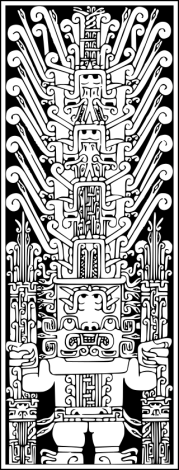
Attaining such an existence on our Earth required special powers or efforts, which today we consider efforts of the brain. The Incas achieved success yet this coincided with the fall of humanity, which, according to various traditions, will continue until some time between 1992 and 2027.
All this is part of the Heavenly Alchemy, which was gradually created by the ancient cultures of Norte Chico (9th millennium BC – to 18th c. BC), Chavin (between 9th and 2nd c. BC) , Mochica (Moche, 1st to 8th c.), Tiwanaku (2nd c. BC till 12th century) and, finally, the Incas (12th till 16th c.), who tried to keep in touch with the sacred heavenly plane through special points, or places of power, called huaca. However, the process of materialization slowly robbed Heaven of its proper presence, until Pachamama (Mama-Pacha, Mother Earth) became dissociated with the concept of time, and associated with the Earth, achieving within the lower forms a dominant position as a manifestation of the sacred. At the same time, each huaca point continued to reflect some celestial body or phenomenon.
In this regard, the most meaningful and significant task for the Andean cultures was the process embedded in the Viracocha symbol (a special alchemical concept referring to the connecting of the powers of Heaven and Earth). It was this process that was defined as special time, or pacha. If we want to try and explain this concept, it is the in-depth time held in the mind, which is projected onto one of the seven spaces of the Sky (these spaces later became known as constellations).
The Andean peoples focused on a specific deep connection, invisible to us, with the space of one of the seven higher consciousnesses of Apu, Pakkarik-pacha (connected with the origin of the world). The concept of this connection underlies the quipu system, used to set or fix the link to the consciousness of one of the thirteen worlds. This ultimate connection is a prerequisite for the development of the consciousness of light, acquired in the process of developing the brain or sight/ vision.
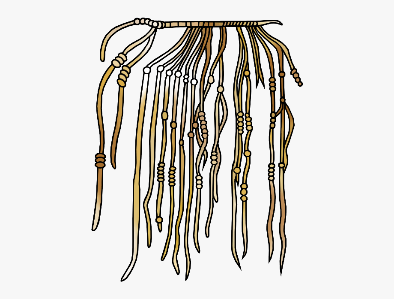
Quipu (khipu) is an important concept in Andean alchemy. In Quechua “Quipu” literally means “knot”, yet the concept is rather linked to the idea of concentration, and the material aspect of concentration. In the minds of the Andean peoples quipu represented three-dimensionality and was used for the integral perception of the macrocosm. They believed that each space represented an integral effort, or a knot (quipu).
This ancient knowledge dates back to the time of the Norte Chico culture – the oldest known pre-Columbian state in America (30 – 18 c. BC), whose inhabitants, in fact, worshiped certain forces (let’s call them symbols), a certain connectedness to space or the consciousness of space. These forces worked like programming, which was used by the brain.
Quipu is not only a knot, it is also a pattern based on a matrix of twelve hanging threads. It is like a code of the Andean alchemy, explaining the functioning of the twelve fields. This means that our existence on Earth was calculated with the use of a certain formula that took into account the twelve fields of space, that is, not only what happens in the visible, but also in the invisible world (both believed to consist of six categories).
The fixation of space with the help of knots can be linked with the generation of a certain effort, where each node is a kind of code, and all together they form a rather complex system of perception that requires an extraordinary effort in the brain (at least from our modern perspective). This restructuring and adjustment of the brain was, in fact, the key process of Andean alchemy, which shaped the human mind according to the heavens, allowing Heaven to control the mind. All that was required from these ancient cultures was to be in tune with the heavenly plane so that the necessary information would enter the brain.
Quipu is thus like encoding the mind with the help of the fields. And each cord, the length of the ropes and threads reflects the actualization of a particular field. The colour represents the frequency, the knots represent the force/ effort, and the spiral (the twisting threads of mixed colours) represents direction.
The deciphering of such ideas in the early quipu is not so important, what is significant here is the state of the brain of the ancients. It is important for us to take into account the originality and special resonance of the ancients with the cosmos, and not just their attempt to impose their understanding on these processes.
Of course, during the time of the Incas the influence of Heavens was lost, but they understood the importance of tuning, which allowed them to develop their brains with the help of quipu, and this already says a lot. For the Incas Quipu did not represent everyday information, it was primarily an educational system of self-development. For example, if we compare the abacus and the calculator, we will see that to the modern person the abacus will seem like a super-complex calculation system as our brains simply lack the necessary effort.
The fact that the Quipu system had the goal of preserving the tunning and connection to the Heavens (a conceptualization of a World beyond, which remains foreign to the modern mind) proves that the brain of these ancient peoples was always alert and never in a relaxed state.
This is proof that the Andean alchemy used a specific system for encoding the mind or rather for maintaining the perception of the hierarchical structure of the Macrocosm – the ancient knew how to maintain three-dimensionality in the brain. This means that what we consider thoughts today had for the ancients an ideographic expression.
The Incas tried to develop and maintain this ability, which they called amauta – the ability to think ideographically and to operate with the energy of the brain cells. The supreme Inca (Sapa-Inca) had such a brain, capable of tying up and materializing events going in-depth up to the ninth level of the relevant frequency characteristics.
This demonstrates the ability of the Incas to perceive and assimilate light, that is, the ability to nourish themselves through the energy of the sun. This is perhaps the main idea of Andean alchemy. The Sun here is not a figurative concept but a light with 24 different shades, or qualities of energy, the most important of which is the type of energy that can develop and strengthen the brain cells.
This means that there is a difference between perceiving a single colour and perceiving a combination of colours (the latter causes resonance with luminosity). The pinnacle of the process of twisting (the assimilation of luminosity) is the resonance within the coils of the brain, which are believed to be conductors converging in the depths and nodes of the brain, where the luminosity can accumulate and transform.
In the Andean tradition, these nodules are associated with corn kernels, and can be of different colours (the whole colour spectrum). Gold coloured nodules represent the ultimate state of assimilation of light energy. In the next stage, all these different threads are intertwined in the spinal cord and redistributed throughout the body.
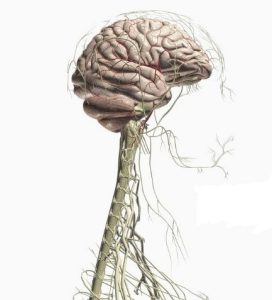
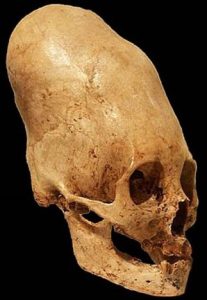
There is information about practices of skull deformation and even the insertion of gold plates into the brain that were meant to enhance the illumination process. This however we consider external alchemy.
In any case, those who want to learn more about the possibilities of Andean alchemy should focus on the practice of maintaining a certain tension. Note that even the absence of a written language among the Incas, before the appearance of the Spaniards, speaks of a culture using special means to maintain the properties of the brain, its tonality and geometry. Relevant proof we can find in both the internal and the external functioning of the brain, especially in seque – the sacred lines connecting people with their environment, or space. The Seque lines linked the Incas with sacred places (huaca).
This leads us to the significance of the External brain reflecting the state of a certain Inca or a certain place, capable of absorbing light. The most important External brain is the Intikancha temple located in Cusco (Peru) perceived as a spatial brain that absorbed the energy of Inti.
The ray of light itself was also associated with multiple ideas, one of which is Pariacaca (Life-Generating). Since the spatial lines (seku) were associated not only with the landscape and astronomy, but also with geometric signs and symbols, the development of alchemy and thinking found expression in the ritual patterns of tokapa and the special signs of kelkas (kelke, kelko).
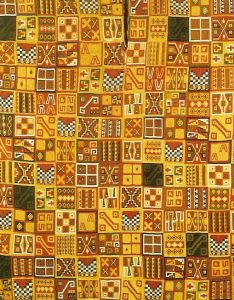
The tokapu pattern is a pattern of sacred symbols of special colours embroidered on textiles, which perform the alchemical task of generating energy. They represent a special system for graphic communication. Note that tokapu patterns are also characterized by internal communication, which allows one to interact with the power of the Apu mountains, with the energy or spirit emanating from it (“tokapu” is made up of “toka” meaning “to come” and “Apu” meaning “sacred mountain” in Quechua).
Tokapu looks like a set of squares with a certain geometric decoration. This is an object of power that contributes to the accumulation of energy – both through the energy of the owner of the clothes (tokapu patterns were mostly applied on clothes) and through the power of the symbolic patterns. Apart from clothing, tokapu patterns were also applied on raincoats, carpets, vases, shields, which are still preserved in everyday life among the Kero Indians (kyero, kiro).
We should also note the ancient system of tying and understanding space – the “reading” of kelkas (“kilyaskuni” means “to read” in Quechua), displayed both in Quipu and in all principles of interaction with space or energy. In fact, tokapu patterns, and quipu knots, and the spirits of the Apu mountains – all this is defined in Andean alchemy as signs and symbols, or rather, knots.
This spirituality can be seen in everything that the peoples of the Andes communicated with. Moreover, the perception of these symbols, say, in the Chavin culture (which lived in the northern highlands of the Andes on the territory of modern Peru in the 9th – 2nd c. BC) did not simply prompt materialization but also the ability to control space. The very effort that produces materialization was understood as tokapu or kelkas, which was subsequently expressed in the concept of the middle world of Kay Pacha, or the effort of the Jaguar.
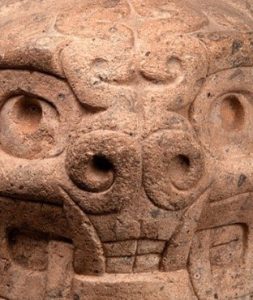
It is this effort that lay the foundations of Andean alchemy. This is the “natural knot” of Quipu. It is also an effort that lets one interact with the higher power of Inti. The history of this effort can help us understand Kon-Tiqsi-Wiraqucha, or simply Viracocha, the connection between the power of Heaven and Earth.
Viracocha represents the perfect idea of mastering the inner quipu or kelkos, which allows you to tune in to, receive and transform light. It represents the highest process of creation as well as the perfect form, and the nature of the perfect man. Viracocha also represents the process of creating an alchemical substance from sunlight. Viracocha, in fact, itself becomes a kind of all-generating substance, or sacred space (huaca).
So, Viracocha is associated both with the concepts of Perfect space and Perfect man, that is, one who can understand the true light. From the standpoint of external perception, Viracocha is seen as golden light or sunlight, which are two different things. True light is intertwined, like quipu, and can materialize in a certain space.
Obtaining this true light was the task of all Andean civilizations, including the Incas, who connected (or rather materialized) the light using both sacred places (huaca) and clothes, objects of power, and gold. For the Chavins (9th – 2nd c. BC) and other pre-Inca cultures, this was attained through stone or mountain emanations (which would later be called the Spirit or the power of the sacred Apu mountains). Meanwhile, the Huari (5th – 10th c.) and Mochica (Moche, 1st – 8th c.) cultures believed that the functioning of a conditionally irrational mind can fill space and call a higher power to Earth.
The generation chain on Earth is generally a special topic, alchemical in its essence. According to the Andean alchemy, the source of this process is the higher consciousness, whereas the material physical plane is only a consequence. That is, space receives something like an immortal seed that needs to be nurtured, and its name is Viracocha.
The Chavin culture demonstrates a special process of interaction with the Sky, and the image of Piscoruna-Pumapasim (“Bird-man with a striped mouth”, Quechua), which only confirms the theory of something coming from above.
The process of creating a culture can be compared to the implantation of the seed of the Mind. It is also the result of the interweaving of material forms of life, which are based on the highest vibrations associated with sunlight, a concept quite unlike modern ones. After all, the main task of the Incas was the acquisition of this true light, and not just the cult of the Sun. This light was necessary for the Incas to cultivate their minds.
The process of materialization of light represented the higher consciousness according to the principle of crystallization. This is what we see in the Chavin culture, where the Higher mind was seen as connected with monoliths, plants, the spirits of the mountains – everything that could cultivate light.
It is traditionally believed that the San Pedro cactus has a special power, capable of regulating the integral influence of the consciousness through the drink wachuma, which became a type of food for the mind among the ancient Indians. Wachuma helped them keep in tune with the higher fields, it gave them strength to make certain changes and overcome the barriers of the mind and the resistance of the lower fields.
Wachuma has been an important element in the spiritual ceremonies of various indigenous Indian cultures for thousands of years. In the context of these ceremonies, the wachuma experience was known to be empathogenic, an experience that could potentially help maintain a certain format of existence. In addition, wachuma was the main source of energy nutrition and, judging by the petroglyphs, a conductor between the worlds.
According to the Andean cosmogony, the process of manifesting light was long, and the formation of man took a long time. Although, of course, initially the goal was not the creation of Man. They were rather attempts to materialize consciousness in various forms and entities, say, even in stone. What was important was the process of regeneration, that is, a peculiar form of transformation linked to a certain tension, revealed in the Andean peoples in the concept of the jaguar. The roar of the jaguar is in Andean culture a symbol of regeneration and the transformation needed to connect with the true light (Inti) and space and time (Pachamama).

The alchemical process itself (pachacutec, or uku-pachacutec) reflects the special quality of incarnation. This is how the consciousness of Manco Capac was formed – the first Inca, or the first Perfect man, who, with his golden shining staff Tapac-Yauri, stirred up space, that is, was engaged in the process of transformation. According to legend, he stirred up the sea foam and thus created a light substance. This staff is a symbol of a process that comes from an even more ancient concept associated with the Mind of Viracocha.
It turns out that Viracocha (like Manco Capac) is both a state and a process. It is both eternal light and the creator of all things. The full name of the Viracocha process is Apu-Kon-Tiksi-Viracocha, where Apu-Kon is the Supreme Consciousness, Tiksi is the Eternal Light, and Viracocha is the Creator.
To understand the nature of Viracocha, one must be able to penetrate into the centre of Cusco, in the capital of the Incas. To do this, it is important to master the vision of Viracocha, or rather, the Viracocha consciousness, which is a certain node of thinking, information of a certain tension. This vision starts off a process that can help one cross beyond a certain information field.
Alchemical consciousness combines visual and tactile perception, that is, it is nodal. This consciousness is unified, it is one, i.e. it is not differentiated by taste, thought, vision, or smell. It contains everything and plays a vital role in energy storage or breathing. The strength of the energy node determines which field a person can communicate with. Note that only the higher fields (starting from the sixth field) have a direct connection with the light. However, the highest level is reached in the eleventh field.
Deep semantic meaning is conveyed with the help of colour (or rather, a combination of colours). The Andean space itself is a crossing of horizontal and vertical levels, forming a cosmogonic cone of knowledge embedded in the Andean cross (chakana).
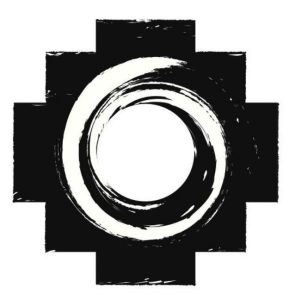
In the horizontal plane, the world is dual, parallel: Hanan-Pacha and Kai-Pacha (above and below). The vertical aspect finds expression in the concept of Inti – the condition for obtaining light (which requires a materialization of sunlight, the solar energy of Inti, perceived as the Divine).
Thus, Inti is a multilevel concept, a kind of virtual form of light living in the Golden City of Paytiti – a place that can accumulate energy and is also understood as Taypikala, which means “stone in the centre” or “light in the centre.” That is, Inti is also the materialized essence of the alchemical process.
This is why it was initially important to create a place (Paititi) to feed Inti. This required both physical gold, capable of emitting light, and symbolic gold, capable of generating solar energy (that is, a certain centre, stone, crystal or person). Whoever reached such a state was believed to have reached the quality of an Inca. So, for the Incas, gold, in the literal and figurative sense, became a reflection of light energy (solar energy), and the very concept of Inti acquired a ritual meaning associated with the generation or creation of a perfect Inca man.
The interaction with light, or the prerequisite for interacting with Inti, is part of the concept of penetration, expressed in the sacred or ceremonial knife tumi. This is an important form of communicating with space within the process of knowing Inti; it materializes the power of thought and is the formula for establishing a connection not only with light, but also with the power of a certain place, with the totem.
This symbol of penetration is a typical concept for the life of the Inca in general, and indicates the importance not only of the sacredness of the Golden City of Paititi, but of the entire territory of the Incas, it is as if it says: “there is light in this place.” Paititi always lives inside the real Inca (transformed light – titi, Quechua). This is the task of Inca alchemy. Thus, the Inti ceremony involves the energy of light, and the transformation with the help of tumi into the substance of titi, which the body and consciousness can assimilate.
Today, this knowledge (albeit in a hidden form) has been preserved in the tradition of the Karpai ceremony, which has been preserved among the highland Indian group of Kero. Karpay opens the door to the great spirit Apu and expresses the spiritual energy of the three powerful forces of life:
- Yachay – spiritual wisdom
- Causay – the gift of life represented by the power of the heart
- Yancay – an effort dedicated to a mission or purpose
The power of the Karpai ceremony comes from a special place that represents the forces:
- Hanan Pacha. The mysterious power of the universe and the heavenly gods, the heavenly plane.
- Kay Pacha. Resolution and the mysterious power of Pacha-mama (Mother Earth), the energy of all living beings.
- Uku-Pacha. The eternal paradise of the spirits of the other world.
The perception of all this must be assisted by special insight. Thus, Andean alchemy is a manifestation of the sacred in “the stone”, in “wood”, in everything and, most importantly, in the mind, which, according to the beliefs of the Incas, is no less mysterious and significant than the manifestation of the sacred in God.
It is important to remember that in Andean alchemy the process of becoming is more important than the prophecies themselves. Of course, it is important to comprehend Andean alchemy well so as to understand the significance of such cultures as Nazca (with its amazing giant geoglyphic drawings), Tiwanaku, Chachapoya (5th – 15th c.), etc.
+Initiation with Crystals
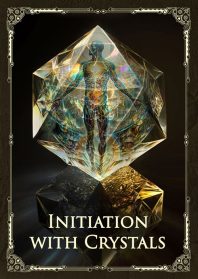
Crystals and stones are not just objects associated with Knowledge in the world of shamanism and magic. They are objects representing the ultimate spirit of the space. They can materialize and condense energy into something visible. Crystals are magical objects as they carry higher vibrational forces. They are also considered to be animated objects representing the power of the place where a particular crystal has materialized. Crystals are characterized by a directed flow of energy, which forms a relationship between the physical and the spiritual reality.
Since ancient times, crystals have been an indispensable attribute of shamans and magicians, who were fascinated by the possibilities revealed through the power of these objects. Crystals are particularly important in the culture of the Andes. According to the cosmogonic ideas of the Andean Indians, crystals represent the nature of Apus (the consciousness of the mountain spirit), and their power is classified into seven types. Thus, Apus is the spirit of one of the systems that can consciously gain a foothold in our vegetative space. It is represented by a certain mountain or even a certain crystal, if its crystalline structure can be filled with energy.
This particular capability for energy accumulation determines how precious a particular crystal is. Energy accumulation sets twelve levels of energy transformation, where there are five types of crystals determined according to the principles of elementals, and seven – according to the heavenly principle (although it would be better to divide them into two groups of six).
The vibration of the crystal also determines its initiation potential. A vital role here is played by its internal connection, as it turns the crystal into a sacred vessel, like a solid emerald of regular geometric shape. Every object in a particular location has its own crystalline form, which plays an important role for the accumulation and conservation of energy in a certain macrocosmic field or a place of energy incubation and accumulation, such as, for example, Ancient Egypt, Ancient China or the Andes.
And that is why the process of crystal initiation combines the following conditions: a place or a space that corresponds to the frequency characteristics of the crystal, and the power of a shaman who can unite you with the power of the crystal.
